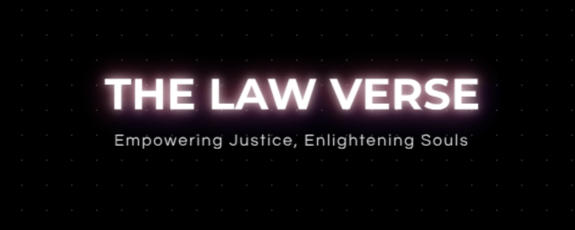Blog By – Bhumi Singh
Championing Justice for Young Minds
In a society that aims to advance, children’s well-being is of utmost importance. They are not only the future but also the foundation for a fair and just society. India’s National Legal Services Authorities (NALSA) Scheme (2015) is a significant initiative that recognizes this. The scheme aims to create a legal system that focuses on protecting and empowering children. The Legal Services Authorities Act of 1987 marked the beginning of legal support for children in India. This act established legal services authorities across the country to ensure that disadvantaged individuals, including children, have access to justice. However, constructing a bridge between legal rights and practical access necessitates a framework, and that’s when the NALSA Scheme comes into action.
Objectives: A Multifaceted Approach to Safeguarding Children’s Rights
The NALSA programme aims to protect children’s legal rights in many ways. It doesn’t just offer legal help; it also works to create a safe environment where kids feel protected and can use the legal system well. Here are its main goals:
- Easy to Get to: The most important part of the programme is making sure that kids from all backgrounds can get legal help, regardless of how much money their family makes. This helps get rid of the money problems that often make it hard for kids and their families to find lawyers.
- Child-Centered Approach: The programme acknowledges that courtroom settings are often intimidating for children. It promotes a kid-focused approach that emphasizes understanding and compassion. This involves using language children can comprehend, providing safe environments for interactions with legal experts, and tailoring procedures to their age and emotional well-being.
- Empowerment: The programme recognises the power of knowledge. It gives children basic legal knowledge about their rights, as outlined in laws like the Juvenile Justice Act and the Protection of Children from Sexual Offences Act. This empowers them to recognize when their rights are being violated and to feel confident in speaking up.
- Representation: Children receive quality legal help throughout their legal journey. A team of lawyers who know a lot about children’s rights and justice helps them in court, family court, and other legal settings. These lawyers are trained and understand kids, so they can handle their cases well.
- Fast Legal Process: It’s important to deal with children’s cases quickly to help them feel better and make decisions in a reasonable amount of time. The NALSA programme pushes for a legal system that works faster and puts children’s needs first, without making them wait too long.
- Rehabilitation Services: The program acknowledges the need for specialized support for children who have been affected by crimes or legal conflicts. It provides services to help them overcome challenges and reintegrate into society as active members.
- Implementation Framework: The National Legal Services Authority (NALSA) scheme establishes a structured framework with essential provisions to ensure the successful execution of its rehabilitation goals. These provisions facilitate the programme’s
nationwide implementation.
The Framework: Provisions That Give Life to the Visio
A) Child Legal Services Committees (CLSCs): CLSCs form a nationwide network at district and local levels. They identify children requiring legal assistance and are the foundation of the legal aid scheme for children. CLSCs include experts from different fields, such as judges, lawyers, social workers, child psychologists, and NGO representatives. This diverse team provides a comprehensive assessment of children’s needs and access to specialized knowledge. CLSCs are responsible for finding children who need legal services through community outreach and partnerships with child welfare organizations. Offering legal guidance and counselling to children and their families. Collaborating with other agencies to ensure a coordinated approach to child protection and legal assistance.
B) Panel of Legal Experts: Establishment of a group of lawyers with specialized knowledge in handling child rights and juvenile justice cases. These lawyers undergo specific training to approach children’s matters with empathy and
professionalism.
C) Educational Initiatives: Conduct workshops and awareness-raising programmes to inform children about their legal rights and the resources available to them. Empowering children to understand when and how to seek legal assistance.
D) Child-Centric Court and Interaction Spaces: Creation of courtrooms designed to be welcoming to children.; Designated spaces for confidential interactions between children and legal professionals.; Elimination of any intimidating factors from these spaces is necessary to provide a safe and comfortable environment for children.
Significance of the NALSA Scheme
A) Empowerment for Children: Legal aid and rights education empower children to advocate for themselves and seek justice.
B) Combating Child Abuse: The scheme provides legal support for children who have experienced abuse or neglect, empowering them to confront perpetrators and improve their well-being.
C) Protection from Exploitation: The scheme shields children from trafficking, child labor, and other exploitative practices by providing them with legal recourse and ensuring these practices are challenged.
D) Access to Justice: NALSA’s programme eliminates financial obstacles that can hinder children and their guardians from obtaining legal assistance. This ensures that everyone has an equal right to legal protection.
E) Rehabilitation and Reintegration: The programme prioritizes assistance for children involved with the law. It follows a restorative approach, aiming to rehabilitate and reintegrate these children back into society.
Challenges and Road Ahead
Awareness: It’s vital to make everyone, including kids, communities, and law enforcement know about the programme.
Infrastructure Development: We need to build a strong network of child-friendly courtrooms and support centers (CLSCs) throughout the country, which will require continuous effort and resources.
Training and Capacity Building: To make the programme work well, it’s important to train more legal professionals and people who work with children about their rights and how to handle legal matters involving children in a way that supports their well-being.
The NALSA Scheme (2015) empowers children by providing legal aid and ensuring their safety. It guides us towards a promising future where children’s rights not only exist on paper but are also defended and realized.
